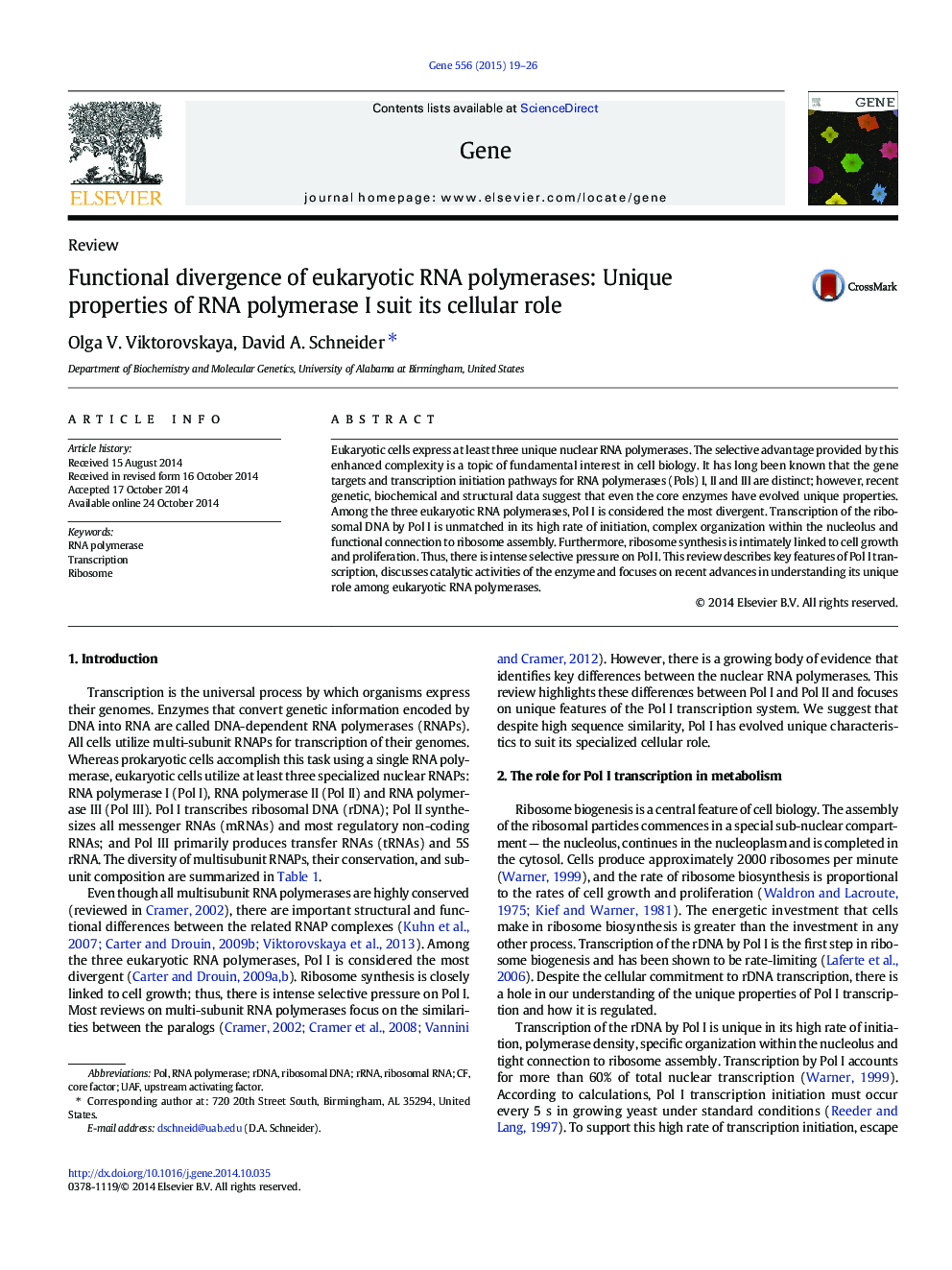| Article ID | Journal | Published Year | Pages | File Type |
|---|---|---|---|---|
| 2815974 | Gene | 2015 | 8 Pages |
•This review focuses on key differences between RNA polymerases I and II.•All multisubunit RNA polymerases share structural and sequence homology.•Despite homology, RNA polymerases I and II have evolved divergent functional properties.•Recent high resolution structural models of RNA polymerase I identify critical differences compared to RNA polymerase II.•Unique features of the eukaryotic RNA polymerases have evolved to suit the enzymes’ specialized cellular roles.•Practical applications of defining and targeting unique characteristics of RNA polymerase I are described.
Eukaryotic cells express at least three unique nuclear RNA polymerases. The selective advantage provided by this enhanced complexity is a topic of fundamental interest in cell biology. It has long been known that the gene targets and transcription initiation pathways for RNA polymerases (Pols) I, II and III are distinct; however, recent genetic, biochemical and structural data suggest that even the core enzymes have evolved unique properties. Among the three eukaryotic RNA polymerases, Pol I is considered the most divergent. Transcription of the ribosomal DNA by Pol I is unmatched in its high rate of initiation, complex organization within the nucleolus and functional connection to ribosome assembly. Furthermore, ribosome synthesis is intimately linked to cell growth and proliferation. Thus, there is intense selective pressure on Pol I. This review describes key features of Pol I transcription, discusses catalytic activities of the enzyme and focuses on recent advances in understanding its unique role among eukaryotic RNA polymerases.
